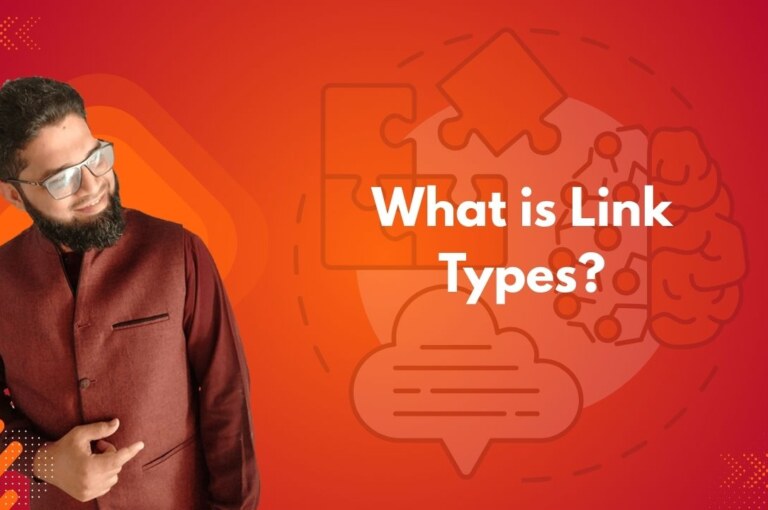Link types describe the kind of relationship between two entities. In graphs or charts, these links appear as edges connecting nodes (which represent the entities). Different link types help us understand how things are related—whether through hierarchy, time, function, or location.
Links aren’t just pathways between pages—they define the relationships between ideas, concepts, or entities. In knowledge graphs and website structures, different types of links help organize information, support navigation, and add meaning.
Common Types of Links
Here are the most common relationship types used in knowledge graphs and link charts:
Hierarchical Links
Define parent-child relationships.
Example: “Sedan” is a type of “Car”.
Associative Links
Connect related items that don’t belong in a hierarchy.
Example: “Coffee” is related to “Caffeine”.
Causal Links
Show cause-and-effect relationships.
Example: “Smoking” causes “Lung Cancer”.
Temporal Links
Indicate time-based relationships.
Example: “World War II” came after “World War I”.
Spatial Links
Describe geographic or location-based relationships.
Example: “Eiffel Tower” is located in “Paris”.
Functional Links
Show roles or responsibilities.
Example: “Alice” is employed by “TechCorp”.
Link Types in Website Structures
On websites, links don’t just connect pages—they organize how users navigate and how search engines understand your content. Here’s how linking types break down in web architecture:
Locality: Local vs. Global Linking
Local Links
Connect closely related pages within a section.
Example: Product pages within the same category.
Global Links
Appear across the entire site.
Example: Links in headers, footers, or site-wide menus.
Completeness: A Logical Link Structure
A complete linking structure ensures:
- Easy access to important content
- Logical navigation paths
- No dead ends or orphaned pages
This improves user experience and search engine crawling.
Scalability: Block vs. Individual Links
Block Links
A group of links shown together.
Example: Navigation menus or “Related Articles” sections.
Individual Links
Standalone links placed within content.
Example: A single hyperlink inside a paragraph.
Three Core Link Types on Web Pages
To better organize and understand web links, we can classify them into three node types:
1. S-Nodes (Structural Nodes)
Appear on every page (e.g., header/footer)
Provide consistent navigation
Examples: “Home,” “About Us,” “Contact”
2. C-Nodes (Content Nodes)
Block links within main content
Help users explore related topics
Examples: “You May Also Like,” “Related Articles”
3. I-Nodes (Individual Nodes)
Single, in-text links
Offer highly contextual, topic-specific navigation
Example: A link in a blog post pointing to a referenced study
Key Takeaways
Link types define how entities relate to each other—whether in data graphs or websites.
A smart link structure improves readability, user flow, and search engine performance.
Use S-nodes for consistency, C-nodes for content discovery, and I-nodes for deep relevance.
Classifying your links leads to better navigation, better SEO, and a more scalable site design.
Want to Go Deeper into SEO?
Explore more from my SEO knowledge base:
▪️ SEO & Content Marketing Hub — Learn how content builds authority and visibility
▪️ Search Engine Semantics Hub — A resource on entities, meaning, and search intent
▪️ Join My SEO Academy — Step-by-step guidance for beginners to advanced learners
Whether you’re learning, growing, or scaling, you’ll find everything you need to build real SEO skills.
Feeling stuck with your SEO strategy?
If you’re unclear on next steps, I’m offering a free one-on-one audit session to help and let’s get you moving forward.





Leave a comment